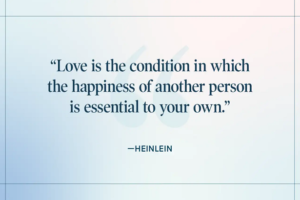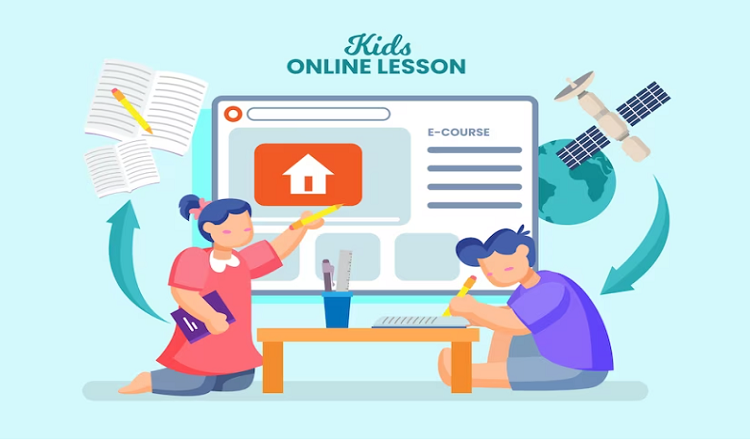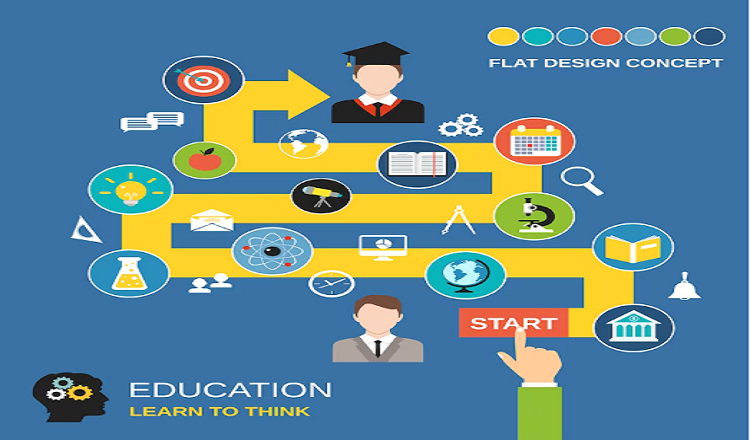The education industry is changing to fit the demands of contemporary students as the world becomes increasingly technologically oriented. E-learning has become a practical substitute for traditional classrooms and textbooks, so the days of completely relying on them are long gone. But which approach to learning suits you best, and is one better than the other? To assist you in making an informed choice, we’ll examine the controversy surrounding the use of e-learning versus traditional learning in this article.
Due to its adaptability and ease, e-learning, usually referred to as online learning, has experienced tremendous growth in popularity in recent years. You may learn at your own pace, from any location, and at any time using e-learning. On the other hand, traditional learning, which involves in-person communication with classmates and teachers, has long been the norm in education. In today’s world, where the epidemic has hastened the shift towards online education, the debate between e-learning and traditional learning has grown more pertinent than ever before. Both techniques have benefits and drawbacks.
We’ll provide you a thorough comparison of online learning versus traditional classroom instruction in this post, as well as advice on which approach would be more suitable for you given your preferences, learning preferences, and professional objectives. Let’s delve in and examine the benefits and drawbacks of each teaching approach to enable you to select the one that is best for you.
Benefits of online learning
Due to its many benefits, e-learning is becoming a more and more common form of instruction in the United States. Flexibility is one of the key advantages of online learning because it enables students to access course materials from any location with an internet connection and at any time. For those with demanding schedules, who reside in remote places, or who have physical limitations, this is especially advantageous. Because students can set their own pace and tailor their learning to meet their needs, e-learning also provides unmatched ease.
The affordability of e-learning is another benefit. Because they have fewer overhead expenses, such as renting classrooms, buying textbooks, and paying for transportation, online courses and programmes are frequently less expensive than traditional classroom-based ones. In fact, according to a recent study by the Babson Survey Research Group, the average cost of an online undergraduate degree programme is 28% lower than that of an on-campus programme.
Additionally, accessing top-notch education from some of the most prestigious universities and institutions in the world is now simpler than ever thanks to e-learning platforms. Numerous courses and programmes in a wide range of areas are available on platforms like Coursera, Udemy, and edX, many of which are free or inexpensive.
Overall, e-learning in the USA has many benefits, therefore it’s not surprising that more students are choosing this course of study. E-learning is a good alternative for anyone wishing to advance their education and profession because of its flexibility, convenience, and affordability.
Benefits of traditional education
Even while there are benefits to e-learning, there are also many advantages to traditional learning methods that cannot be matched online. Face-to-face connection with teachers and peers is one of the key benefits of traditional learning. This makes it possible for students to ask questions, participate in conversations, and get feedback right away, all of which can significantly improve the learning process. Additionally, traditional education offers practical experience, especially in professions like engineering, the arts, and medicine.
Furthermore, because teachers can monitor and evaluate students’ progress in real-time, traditional learning may provide individualised feedback and coaching. Particularly for students that need extra support or attention, this may result in more customised and efficient learning outcomes.
Ivy League colleges like Harvard, Yale, and Princeton as well as vocational and trade schools that provide hands-on training in trades like plumbing, electrical work, and welding are successful examples of conventional learning methods.
Overall, traditional learning methods have distinct advantages that cannot be overlooked, even though e-learning may be flexible and convenient. Traditional learning is still a well-liked and successful style of education in the USA because it offers face-to-face connection, practical experience, and personalised feedback.
E-learning and traditional education’s differences
Both e-learning and traditional learning are quite distinct educational approaches, and each has benefits and drawbacks of its own. Teaching methods are one of the main contrasts between the two. While e-learning frequently makes use of pre-recorded lectures and online discussion groups, traditional learning depends on direct interaction with instructors. Additionally, traditional learning’s curriculum is frequently more structured, whereas e-learning offers greater course content flexibility.
The resources at hand are yet another significant distinction. While e-learning frequently offers multimedia tools like films, interactive simulations, and online quizzes, traditional learning frequently relies on textbooks and classroom resources.
Finally, the two approaches differ in their assessment strategies. While e-learning frequently uses online quizzes and peer-reviewed assignments, traditional learning frequently relies on written exams and in-class presentations.
Overall, both learning strategies can be successful in various contexts. E-learning may be preferable for students who need flexibility and convenience while traditional learning may be better for individuals who benefit from face-to-face connection and structure. In the end, the preference and needs of the particular learner will determine which of the two approaches is used.
Factors to take into account while deciding between traditional learning and e-learning
Several considerations should be taken into account while deciding between traditional learning and e-learning in the USA. Learning style is one of the most crucial elements because various students have varying preferences for contact with teachers and classmates as well as for learning methods. As e-learning allows more flexibility in terms of when and where learners can access course materials, schedule and location can also be quite important.
Cost is another major factor, as textbook fees, transportation costs, and classroom supplies all make traditional learning techniques more expensive. Since many of these costs are eliminated by e-learning, it can be more economical.
The learning method’s success ultimately depends on how well it fits the needs and preferences of each student. For instance, traditional learning may be more beneficial for a learner who needs hands-on experience, whereas e-learning may be more efficient for a learner who needs more flexibility and convenience. Learners can choose the teaching strategy that will benefit them the most by carefully weighing these variables.
Traditional and online education in the USA
The American educational system makes substantial use of both traditional and online learning. While hybrid courses are offered by many traditional institutions and many of them have integrated online learning systems, fully online universities like University of Phoenix have become more and more well-liked in recent years. With a vast selection of courses from renowned universities and subject matter experts, e-learning portals like Coursera and Udemy have also become popular.
Ivy League schools like Harvard, Yale, and Princeton, as well as state universities like the University of California and the University of Michigan, are examples of successful traditional educational institutions. The online Master’s in Computer Science programme at Georgia Tech and the online Bachelor’s in Psychology programme at Arizona State University are examples of successful e-learning programmes.
While e-learning may enhance access to education and offer flexibility, there are also issues including a lack of interaction with teachers and classmates and worries about quality and accreditation. Traditional education faces difficulties like growing expenses and problems with accessibility. In general, both types of education in the USA offer opportunities and difficulties to students and institutions.
Conclusion
In conclusion, the argument between traditional learning and online learning in the USA is a complicated one with many facets. The best way to use ultimately depends on the learner’s choices, learning style, and environmental factors. Both methods of learning offer benefits and drawbacks.
While traditional learning gives face-to-face engagement, hands-on experience, and customised feedback, e-learning offers flexibility, convenience, and cost effectiveness. In the USA, there are both successful traditional and online learning institutions and programmes, but each approach has its own difficulties and restrictions.
Despite the ongoing controversy, it’s critical to understand that both traditional and online education can offer worthwhile educational possibilities. We want readers to express their own insights and viewpoints on the subject, as well as to keep looking for fresh approaches to strengthen and advance both teaching and learning techniques. We can work towards a more effective education system that satisfies the needs of all students with continuing innovation and cooperation.
Read More You May Like:











